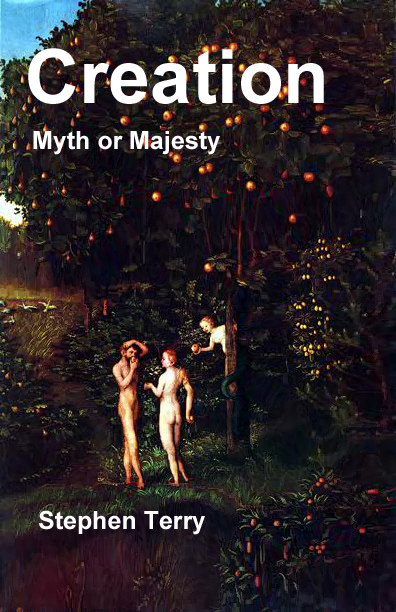
Stephen
Terry, Director

From the Lions' Den to the Angels' Den
Commentary
for the February 15, 2020 Sabbath School Lesson
 Daniel
answered, "May the king live forever! My God sent his angel, and he shut the mouths of
the lions. They have not hurt me, because I was found innocent in his
sight. Nor have I ever done any wrong before you, Your Majesty."
Daniel 6:21-22, NIV
Daniel
answered, "May the king live forever! My God sent his angel, and he shut the mouths of
the lions. They have not hurt me, because I was found innocent in his
sight. Nor have I ever done any wrong before you, Your Majesty."
Daniel 6:21-22, NIV
Daniel,
chapter 6, is probably one of the best known and most popular among the many stories
in the Bible. It has all the earmarks of a Grimm Fairy Tale. A righteous, but
persecuted, hero is trapped by the schemes of evil, jealous adversaries from within
the cohort of appointed leaders in Babylon. He enjoys a miraculous deliverance
from their machinations, and thereby serves as an example that morality and
righteousness will be rewarded if we only persevere. In several ways, Daniel's experience
in this chapter is the antithesis to Haman's in the book of Esther.
Interestingly, both tales arise out of the Jewish experience after the fall of
Babylon to the Persians, perhaps serving as metaphors for the theme of
miraculous deliverance from Babylonian captivity.
Although
we may not realize it, our understanding of Daniel's experience has at times been
somewhat sanitized for younger or more sensitive audiences, perhaps making it
even more like a fairy tale. One popular set of children's "Bible Stories"
books has him walking into the lions' den while the actual biblical text says
he was thrown into the den. Daniel perhaps had been taken to Babylon as a
hostage when Jehoiakim, who was set on the throne by
Egypt, became vassal to Nebuchadnezzar of Babylon. This would have taken place
about 605 BC, and Darius I, the Persian king in this story, began his reign in
522 BC. If Daniel was a "young man" when taken captive and if we
allow him an approximate age of 18, that would make him around 96 at the time
of the events of chapter 6. If so, tossing him into the lions' den would
normally have caused injury, even mortal injury, at such an advanced age.
Further factors confirming this den was a pit as opposed to some other type of
structure are the facts that he had to be raised from the den at the end of the
ordeal, the den had a stone covering instead of a gate or a door, and finally
his detractors and their families were tossed in as he was and the lions
destroyed them before they even reached the floor. Had they walked in, they
would already have been on the floor. Like most fairy tales, it strains credulity
that Daniel could have come out of the experience with no wounds, since the
fall itself would have been hazardous at best. But the moral of the story is
often the more important aspect over the facts. As such, it may be more
sensible to see the story as metaphor as opposed to literally correct in every
aspect. This may even have provided the justification for the author of the
previously mentioned "Bible Stories" series to assert that Daniel walked
into the den.
Much
of modern Christianity is likely not aware that the book of Daniel originally
had two more chapters that were in the original Septuagint, the ancient Greek
translation of the Hebrew scriptures done around 250 years before Christ's
incarnation. This was the Greek translation of the scriptures popular in
Christ's day. The chapters were later removed from the text by Theodotian over a century after Jesus' ascension when he
produced a newer Greek translation of the Hebrew texts. We do not have a clear understanding
of the source materials he used, so it is impossible to evaluate completely
what justification there was for the redaction. Chapter 14 contains several
miraculous deliverances for Daniel as well that seem to be based more on his
inherent wisdom than divine interaction. Perhaps this is why Theodotian chose to exclude them.
So
how do we alternatively view this story as metaphorical? First, it helps to
ascertain some of the symbolism involved. Daniel himself represents the captive
Jewish people. That he was tossed into the lions' den and did not walk into it
represents that the Jewish people were not willing captives and at least initially
subjected to injury and cruelty to ensure their compliance and subjection. The
pit of the den, without doors or gates, represents the hopelessness of their situation.
Even the stone covering the den may have symbolic meaning if we remember the
"stone cut out without hands" that represented God's kingdom in chapter
2. It may represent that the Babylonian captivity was ordained of God and
sealed by him in judgment. The lions, of course, were symbols of Babylon which
considered the lion as its symbolic representative, much like we use the
bald-headed eagle to represent the United States. The fact that Daniel emerged
unharmed may refer to the restoration of Jerusalem which like
Job in his book, ended up wealthier after the suffering endured than before.
How that factually compares with the fabled wealth of Solomon is immaterial to
the moral of the story which, like fairy tales that end with heroes who
"live happily ever after," don't reflect reality.
It may also be symbolic that Daniel does not walk out of the den, but is lifted
out by his Persian deliverers, who also cause the accusers, who may have been
carryover administrators from Babylon just as Daniel was, to be destroyed in an
allegory to the destruction of the Babylonian empire. The angels shutting the
lions' mouths would also be symbolism that it was by the actions of God that
Babylon was silenced. There is much more metaphor here, but this serves to give
the general idea about using metaphor to examine scripture.
While Daniel's age and frailty may have made this story seem unlikely, if we
focus on the literal impossibilities, we may miss the deeper intent of the
story. We may need to remind ourselves that Daniel is a prophetic book and that
symbolism is its stock in trade. Therefore we may find little justification to
jump from the prophetic symbolism of the surrounding chapters into a simple
literal understanding of chapter 6. Truth is generally consistent and may argue
against doing so. If we approach this chapter with similar understanding to the
others, we may find within the story not only the deliverance of the Jews from
Babylonian captivity but a prophetic foreshadowing of the Second Angel's
Message of Revelation, chapter 14, which speaks once again of deliverance from
Babylonian captivity. As Daniel's deliverance came at the hands of angels, so
the latter day deliverance comes through the agency of angels.
Daniel
is not only telling the story of the literal fall of Babylon and its later
resurgence and destruction. It is reverberating with the theme of the entire
collection of scriptures, going even beyond the canon we are familiar with
today. That theme may share the title of Charles Dicken's "Tale of Two
Cities," for it is the story of the ongoing conflict between Jerusalem and
Babylon, allegorical symbols for the kingdom of God and the kingdom of fallen
man. The names themselves symbolize the controversy that has spanned millennia.
Jerusalem means "City of Peace," while Babylon means
"chaos" or "confusion" as the story of the Tower of Babel
in Genesis, chapter 11, illustrates, for it is there that God confused the languages
and created chaos, making it difficult, if not impossible, for men to work
together to challenge God as they did back then on the plain of Shinar, where
the city of Babylon was eventually to rise to power.
With
such a confusion of languages, and being closer to the reality of literal
Babylon here on earth, our understanding of God and his will became just as
confused as our languages represent, and as a result, peace and harmony have
ever been elusive. Many countries have been at war, either foreign or
internally, for much of their existence because the means to the peace
represented by Jerusalem has been obscured by the chaotic frenzy and spirit of
retribution represented by Babylon. Nimrod is identified as the founder of
Babylon in Genesis, chapter 10. He is called a mighty hunter and apparently was
gifted or able to develop the ability to compel others to support his projects,
including building the Tower of Babel. Both the Quran and the Midrash Rabba have stories of debates between the patriarch Abraham
and Nimrod, ruler in Shinar, where Ur is located and is the city Abraham left
for Canaan. The Quran goes so far as to say that this is why Abraham left for
Canaan, as he was exiled by Nimrod for opposing him regarding the character of
God.
While
Nimrod may be seen as a metaphorical representation of anyone who opposes God
similar to the idea of an antichrist, his existence as a real person is
ubiquitously attested in so many sources, he may be a real figure as the Bible
attests who has risen to metaphorically represent opposition to God in the same
way that Babylon opposes Jerusalem in representation of that greater conflict.
When we understand this greater narrative of which Daniel is only a portion, we
can also begin to see that a metaphorical approach to scripture can unlock a
much richer understanding of the text than an insistence on only a strictly literal
approach can reveal. It can reveal subtle chords of harmonies that transcend
not only the 66 books of the Protestant canon, but history and the vaster,
ancient literary resources beyond the Bible. The Bible did not miraculously
appear from thin air, but as it claims of itself, arose from the experiences of
ancient peoples. Those people passed on their stories and their
interpretations, first orally, and with the advent of written language, migrated those stories into literature. The Bible is like a
doorway, or a time machine, if you will, into a distant past that is at best,
poorly understood, with many documents still locked and awaiting translation
and understanding. Thanks to the Bible, we have the opportunity to stand before
that doorway and walk through. That is such a blessing for each of us.
